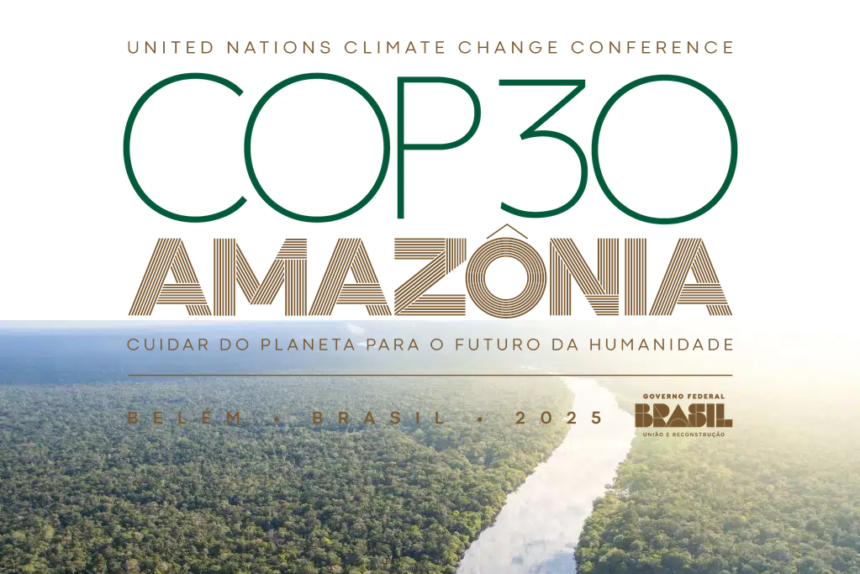COP30 in Brazil : A Global Climate Turning Point the World Can’t Afford to Miss The city where the Amazon River meets the Atlantic Ocean will soon host the most anticipated climate event of the decade: COP30. In a world already battered by extreme weather, rising seas, and vanishing biodiversity, this year’s United Nations Climate Change Conference is not just another diplomatic gathering—it’s being billed as the summit that could shape humanity’s future.
After decades of missed deadlines, vague commitments, and political backpedaling, COP30 is expected to deliver more than rhetoric. With leaders from nearly 200 countries preparing to descend upon Brazil’s Amazonian capital, the stakes have never been higher, and the expectations never sharper.
🌍 A Critical Juncture: Why COP30 Stands Apart
While past COPs have served as symbolic steps toward climate awareness, COP30 arrives with an urgency driven by unmistakable consequences. From devastating floods in Asia to unprecedented wildfires across Europe and the Americas, 2025 has made it clear: climate change is no longer a future problem—it’s a now problem.
This summit also marks the end of a five-year review cycle under the Paris Agreement, where nations must submit new or revised climate goals, known as Nationally Determined Contributions (NDCs). These updated pledges are expected to chart the path toward keeping global warming under 1.5°C—an increasingly elusive target.
🇧🇷 Why Brazil’s Amazonian Heartbeat Matters
Belém, the host city, is a gateway to the Amazon Rainforest—a living, breathing carbon sink that plays a pivotal role in global climate balance. Hosting COP30 here is no coincidence. It’s a statement: that the fight against climate change cannot be won without protecting the planet’s most vital ecosystems.
Brazil’s leadership at this summit is equally significant. For the first time in years, the country is stepping forward as a climate frontrunner—pledging to curb deforestation, expand clean energy, and protect Indigenous lands. These commitments will be under the spotlight, both celebrated and scrutinized.
💰 Financing the Future: The Climate Money Gap
A major focus of COP30 will be climate finance—specifically, how much wealthy nations are willing to invest in helping developing countries adapt to and mitigate the impacts of climate change.
For years, developing nations have called out the broken promises around climate funding. The long-standing pledge of $100 billion annually has rarely been met in full. Now, talks are shifting toward a more ambitious target—potentially exceeding $1 trillion annually over the next decade.
At stake is the fate of vulnerable nations—small island states, drought-stricken regions, and densely populated cities that are on the frontlines of a crisis they did not create.
🌳 Protecting Forests, Preserving the Planet
One of COP30’s most anticipated developments is the proposed launch of an international tropical forest protection fund. Brazil, Indonesia, and the Democratic Republic of Congo—home to the world’s largest rainforests—are advocating for a financial mechanism that rewards conservation and penalizes illegal deforestation.
The fund aims to support countries that preserve natural carbon sinks, recognizing that forests aren’t just local treasures—they’re global lifelines.
This proposal is expected to ignite debate: Should nations be paid for simply protecting what should already be preserved? Or does the urgency of climate change demand bold new financial models to save what remains?
🏭 Emissions Cuts: No Room for Delay
For global temperatures to stabilize, scientists warn that greenhouse gas emissions must be halved by 2035. COP30 provides a final checkpoint before that timeline becomes unmanageable.
However, early drafts of country pledges suggest a familiar divide. While some nations have submitted strong commitments with clear transition plans, others are still clinging to fossil fuel dependencies.
The challenge is dual: How can high-emitting nations accelerate their phase-out timelines, and how can developing countries leapfrog fossil fuel use without sacrificing growth?
The answers may lie in breakthroughs in green hydrogen, decentralized renewable grids, and a reimagined industrial policy that marries sustainability with innovation.
🔥 Loss and Damage: Turning Words Into Relief
Another critical issue that will dominate COP30 is loss and damage—the idea that countries most affected by climate disasters deserve financial compensation.
For many nations, especially in the Global South, climate change has already imposed irreversible losses: drowned coastlines, failed harvests, destroyed homes. After years of resistance, a dedicated loss and damage fund was finally established. Now, the conversation shifts to how it will be funded, accessed, and governed.
Activists and vulnerable nations will demand action, not platitudes. Without meaningful progress, trust in the COP process itself could erode.
🔄 Equity & Accountability: Rebuilding Trust
One of the biggest challenges for COP30 is to rebuild trust between the Global North and Global South. Climate justice remains a central theme—especially when many rich nations are perceived as falling short on their own pledges while pushing for stricter standards on others.
Questions that will dominate the negotiations:
- Will the world’s largest economies commit to deeper cuts and faster timelines?
- Will developing nations receive support without strings attached?
- Can transparency frameworks ensure countries stick to their word?
The answers could either strengthen the Paris framework—or fracture it irreparably.
🌏 India’s Role: The Bridge Between North and South
India enters COP30 in a unique position. As a rapidly developing country with significant emissions but ambitious renewable energy goals, it often straddles both camps.
In 2025, India:
- Is on track to meet 50% of its electricity needs from renewables
- Is piloting green hydrogen corridors in multiple states
- Has launched community-led climate resilience programs in rural areas
India is expected to champion climate equity, pushing for fair financing and recognition of developmental rights. At the same time, it is likely to unveil its new 2035 roadmap—an updated vision balancing economic growth with environmental responsibility.
🧠 Technology & Innovation: The Silent Stars
While diplomacy often grabs headlines, the quiet force propelling climate action is innovation. COP30 will showcase hundreds of clean-tech startups, breakthrough research in carbon capture, and sustainable city prototypes.
Technologies such as:
- Solar-powered desalination
- AI-driven forest surveillance
- Carbon-neutral construction materials
… are not science fiction anymore—they’re part of the climate solution toolbox.
Expect deep conversations around intellectual property, technology transfer, and global collaboration—because climate tech only works when it’s accessible.
🕊️ Youth & Indigenous Voices: No Longer on the Sidelines
The faces of climate advocacy are changing. Indigenous leaders, youth activists, and grassroots movements have transformed into central stakeholders.
At COP30, they’re not just protesting outside the venue. Many are negotiating at the table.
Their demands are clear:
- End fossil fuel subsidies
- Prioritize nature-based solutions
- Recognize Indigenous knowledge systems
Their presence reminds the world: climate action is not just about carbon—it’s about people, culture, and survival.
🧭 What Success Would Look Like at COP30
A truly successful COP30 would mean:
- A massive boost in climate finance commitments
- Operational clarity for the loss and damage fund
- Major NDC updates aligned with 1.5°C goals
- Tangible protections for tropical forests
- Stronger international cooperation on climate tech
But perhaps most importantly, success would mean that the world leaves Belém not with more promises, but with a shared plan—and the courage to follow through.
“Exciting News! Sejal News Network is now on WhatsApp Channels
Subscribe today by clicking the link and stay updated with the latest news!” Click Here
Our App : Click Here



